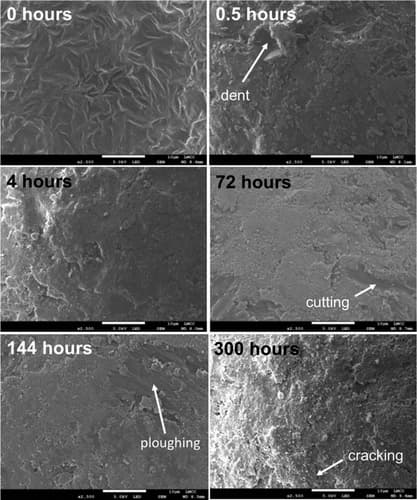Microplastic Degradation During Aeolian Erosion
Background
Microplastic pollution is a growing concern due to its persistence in the environment and potential health risks. While it is known that microplastics can be transported by wind, the effects of wind-driven saltation on their physical and chemical properties remain poorly understood. This study employs Scanning Electron Microscopy (SEM) to analyse the morphological changes and surface modifications of microplastic beads subjected to simulated saltation with quartz grains.
Experimental
Spherical microplastic beads were exposed to controlled saltation processes for up to 300 hours. SEM imaging was used to assess changes in particle size, shape, and surface characteristics. FIB cross sectioning and Energy-dispersive X-ray spectroscopy (EDS) was conducted to investigate elemental composition changes due to quartz implantation on the surface of the microparticles.

Results
Size and Shape Changes: SEM imaging revealed that microplastic beads experienced a 30–50% reduction in diameter after prolonged erosion, with mass loss reaching approximately 80%.
Fragmentation: Over 95% of the detached plastic fragments were ≤10 μm in diameter, indicating the potential for airborne transport.
Surface Modifications: SEM-EDS analysis showed a decrease in carbon content and an increase in silicon on the microplastic surfaces, suggesting that fine quartz particles adhered to the microplastic beads during abrasion. FIB was used to characterise the thickness of the quartz layer adhered to the surfaces of the microplastic bead.

Summary
SEM analysis provided critical insights into the mechanical degradation of microplastics due to aeolian saltation. The formation of fine microplastic fragments poses potential environmental and health risks due to their capability for long-distance transport and inhalation. These findings highlight the importance of understanding wind-driven microplastic weathering in global pollution studies.
Acknowledgement
Joanna Bullard